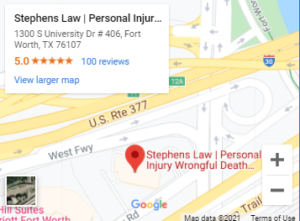What’s the Timeline of a Personal Injury Case?

If you or someone you love has been hurt due to someone else’s negligence, you have a lot on your mind. Not only are you experiencing pain and suffering, but you may have lost wages and mounting medical expenses.
If you think you have a personal injury case, you probably have many questions about how to begin the process. The more you know about the timeline of a personal injury case, the better your ability to make the best decisions for your future.
The process of filing a personal injury claim and pursuing compensation can seem daunting. So, here’s a general timeline – from accident to trial — to help you decide if you should seek compensation for your losses.
Table of Contents
1. The Injury Occurs
Accidents are just that – accidents. We don’t expect them, and they can cause stress and anxiety as well as pain and suffering.
As soon as possible after an accident happens, it’s essential to stop, collect your thoughts, and gather details and evidence about what happened.
Depending on the nature of your accident and the extent of your injuries, this first step can involve:
- Calling the police
- Taking photos
- Gathering information such as IDs, insurance cards, and license plate numbers
- Taking note of traffic cameras, construction zones, weather conditions, store conditions, and property conditions
- Getting names and contact information for witnesses
Taking the time to do these things can be really important down the line should you decide to file a claim or lawsuit.
2. Seek Medical Attention

Although this is listed this step as second, it should be your top priority to seek medical attention as soon as possible after the accident.
Keep in mind that some injuries may not be apparent right away, especially after a traumatic accident. For example, the adrenaline and shock you experience after a car accident could limit the amount of pain y ou feel for a short time. However, you may have a brain injury or whiplash in the accident.
Insurance companies often maintain that someone who denies treatment at the time of the accident was not really injured.
Also, take photos of your visible injuries. These images will provide documentation for your claim after any bruises, cuts, scrapes, and abrasions have healed.
Indeed, if you do not seek medical treatment within the first 14 days after an auto accident, you may lose your entitlement to the Personal Injury Protection (PIP) benefits available under your own insurance policy.
3. Consult a Personal Injury Attorney
According to the Insurance Research Council, people who hire a personal injury attorney receive three-and-a-half times larger settlements than those who choose to settle with the insurance adjuster on their own.
Stephens Law offers a free, no-obligation consultation. Attorney Jason Stephens will meet with you to discuss what happened and help you determine your best course of action. If you decide to move ahead with your claim or lawsuit, you only pay a fee if he helps you win your case.
4. Hire a Personal Injury Attorney

Once you hire an attorney, an experienced team will investigate your claim and review your medical records to determine how much compensation you should demand. Your attorney will handle communication with the insurance adjusters, negotiate settlement offers, and represent you in court if necessary.
Your attorney will begin with a thorough interview.
You will need to provide the following information:
- How the accident happened
- Any medical conditions you had before and after the accident
- Where you received medical treatment for your injury
- All treatment recommendations and medications
It’s essential for you to be as complete and forthright with any information regarding your claim. Your attorney will rely on these details to build your case.
5. File a Claim or Demand a Settlement
In order to recover insurance benefits, you’ll have to file a claim with the at-fault party’s insurance provider. You’ll also have to submit a demand letter, which is basically an outline of what happened/who’s to blame and a request for compensation, backed by evidence.
Insurance companies will either (a) pay your claim in full, (b) deny it in full, or (c) counter with a lower amount of money than you’ve requested.
If the cost of your injuries exceed what an insurance company can or will pay, you might need to consider filing a personal injury lawsuit.
6. File a Personal Injury Lawsuit
If an appropriate settlement with the insurance company cannot be reached, the next step in the timeline is to file a lawsuit.
The state of Texas has a two-year statute of limitations for personal injury claims. This law means that in most cases, you need to file a lawsuit within two years from the date of the accident. If you miss the deadline, Texas courts will not hear your case.
7. Participate in a Personal Injury Lawsuit

One of the first questions accident victims ask is how long the trial will last. Unfortunately, there is no easy answer. Personal injury trials can be resolved in a matter of hours, or they can take months.
The court will name you as the plaintiff and the other party as the defendant. The complaint must be served on the other party with a summons to appear for a court date.
Pre-trial motions can seek court orders for evidence, such as documents and witness statements. In some cases, a motion for summary judgment is filed at this point. This motion might result in the resolution of the case before it goes before a jury.
Another possibility is that the defendant makes a settlement offer before the case goes to the jury. Your attorney will review all offers and then advise you on whether it is not in your best interest to accept them.
If your case continues, your attorney will represent your case to the jury, seeking a fair judgment for you. Sometimes, a personal injury trial has two parts – liability and damages. If the defendant admits liability, the trial may just involve damages.
8. The Judge or Jury Arrives at a Verdict
A judge or a jury will determine who is responsible for your injuries and how much they should pay for the resulting damages.
If the defendant can prove that you share some blame for your injuries, your award may be reduced. Texas is a modified comparative fault state. That designation means that your award will be reduced by an amount equal to the percentage of your fault — as long as it is 50% or less.
After the verdict is entered, either side may file a motion or appeal with a higher court. If this happens, your attorney will stay by your side throughout any of these proceedings.
If you have been injured due to someone else’s negligence or recklessness, you may have the right to seek financial compensation. Contact an experienced personal injury lawyer for a free consultation to discuss your legal options today.

